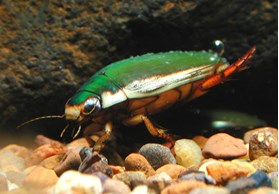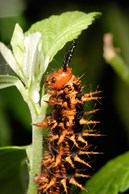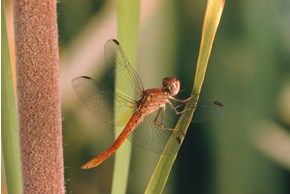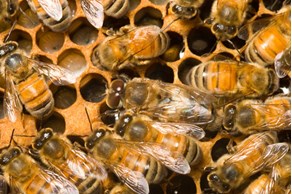Insects live in different places
Insects live in just about every habitat on Earth, from the sands of hot deserts to cold snowy mountain streams. Most insects live on land, in fact about 97% do. Many insects spend all of their life on land, such as bees and caterpillars (which of course become moths or butterflies).
However, some insects live in freshwater. Dragonflies begin life in water such as rivers, lakes, and ponds, but then take to the air as adults. And other insects, such as the diving beetle, spend most of their time in the water, but they must return repeatedly to the surface of the water to breathe air.
The image gallery below contains stills of four different insects that live in different places. Whether it's in a lake, a hive or on a leafy plant, each insect has their needs met in these different habitats.
Learning outcomes
In this activity children will:
- describe images to recognise that different insects live in different places, such as land or water
- ask questions about the animals in the images
- communicate their observations about the images.
Engage
- What type of animal can you see in each picture?
- What other things can you see in the picture?
- What type of place or habitat do they live in?
- What is a habitat?
Explore
- What kinds of needs do you think each of these insects have?
- How can you tell? Do you think they all have the same or different needs?
- Why might these insects live in different places to each other?
Explain
A habitat is the type of environment where an animal or plant lives, such as tropical rainforests, grasslands, or freshwater ponds. Animals are adapted to live in a particular kind of habitat where their needs are meet. For example: a honey bee lives in a habitat where it can easily find its preferred food of flowers.
Elaborate
- Have each student write down one question they have about the insects. Share them via an interactive whiteboard or a 'wonder wall' and together find out ways they could answer their questions.
- What kinds of habitats are in the schoolyard? Or a nearby park? Make a list or photograph the different habitats in your local environment.
- Explore a habitat in your schoolyard and survey and photograph the insects within that habitat. Have students research one insect and find out what its needs are, then report their findings in a poster, drawing or digital story.
- Extension activity: find a school located in a different part of Australia and share your insect pictures. Compare and contrast the similarities and differences in the insects found in each place.
Evaluate students' understanding
- Write a list of recommendations on how you can help your insect survive the changes in its habitat.
- If you were an insect how would you feel if you were removed from your natural habitat? What do you think would happen to you?










